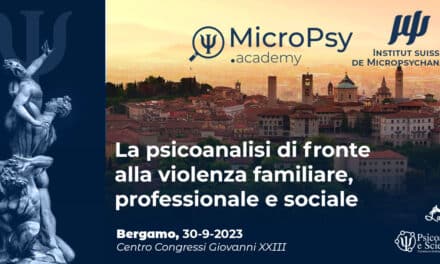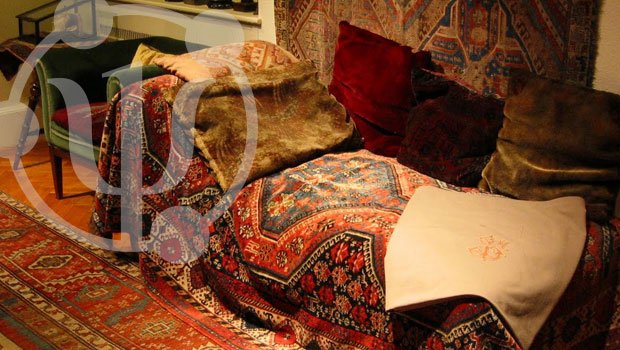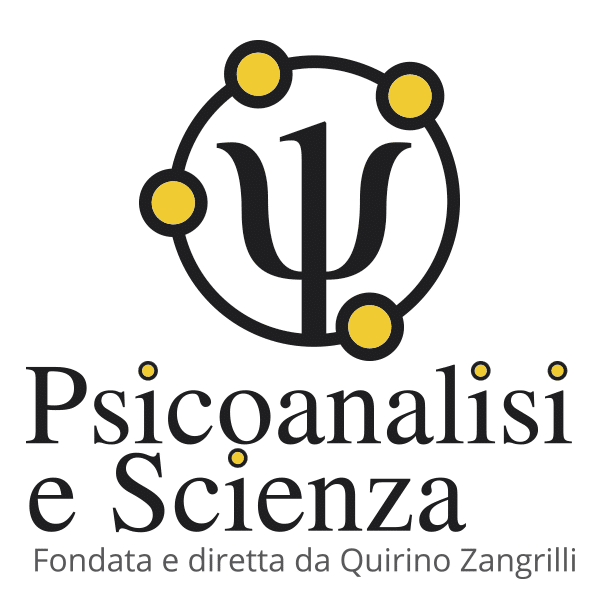The intensive psychoanalysis is a method of investigation of the human psychism of a Freudian derivation, which thus preserves all the rules of the classic psychoanalysis, use of free association, absence of face to face, neutral listening, but which distinguishes itself from the classic one for two characteristics: the lengthening of the session time beyond the canonic sixty minutes in order to conform to the physiological rhythm of the dissolution of the resistances and the concentration of the analytic work in the most compact length of time possible, trying to assure the shortest free interval possible between sessions, respecting the social exigencies.
We can say that duration and minimum frequency of the intensive psychoanalysis never fall below three sessions per week, each lasting a minimum of two consecutive hours.
The ideal praxis remains that of daily sessions.
I have been practicing this modality of psychoanalysis for 35 years and the powerful therapeutic impact and the efficacy of the method, have allowed me over the years to often work with extremely high rates of improvement and resolution, even with severe borderline subjects or psychotics of recent onset.
It is possible to permit these patients to liquefy their delusions, even those well structured of the paranoiac type, often without pharmacological aid (even if I have appreciated and practiced in tandem with Doctor Gioia Marzi, the so-called double taking on responsibility of the patient: the psychoanalyst who leads the psychoanalysis, flanked by the psychiatrist which utilises, in total independence, the pharmacological support with special attention as not to induct a sedation which could inhibit the associative ideation).
In the last twenty years circa a strange social phenomenon has established itself within the observation of those who conduct psychotherapy: a vertiginous increase of the borderline syndromes in substitution to the neurotics now come to the psychoanalyst.
In my opinion this is due to, on one hand, the lack of the parental safeguard: a substantial and total permissiveness has made way which assures teenagers the unconditional safeguarding of the pleasure principle; the educational function of the school has literally disintegrated and at the same time also the perception of social control.
The minds of our teenagers today develop in the dimension of “all is possible”, that is the very one of the unconscious system: recently I found myself in the presence of a conversation between two young mothers muttering about the benefits of allowing their children over 4-5 years of age to defecate elsewhere other than in the toilet.
Now, the fact that it is possible to think of something similar, says a lot about how the ego is losing its role of mediation between the id’s requests and the reality principle.
On the other hand society has almost become psychotic: the total anomy, the lack of entities regulating the instinctual pressure, the lack of the ego provided by the parents during the first infancy, the educational role of the school which is more or less absent (the parents beat or report the teachers who dare to sanction the destructive behaviour of the students) and the disintegration of the ego-society are under everyone’s eyes. A world in which one can voluntarily kill a human being and be freed after 5 or 6 years is the prelude of a generalised psychosis.
There are an infinity of social psychology considerations to be made but this is nor the place or time. I have spoken about this phenomenon in an attempt to explain why, after at least twenty years of psychoanalyses conducted on normal-neurotics or neurotics, I have found myself prevalently receiving requests by border-line or frankly psychotic subjects for about the last fifteen years.
The delicate but unavoidable issue of the existence of the chronicity in psychopathology would be necessary now.
Simplifying, we could say that two are the factors which fuel it: at one end a structural difficulty in the construction of a steadily functioning ego, at the other end the inclination to remain in a fusional dimension, opposing oneself in various ways to the acceptation of the existence of the third defusional and, in cascade, the reality data: ultimately the difficulty of renouncing the safeguarding of the narcissistic omnipotence.
In an article dedicated to the exposition of the psychoanalysis of a severe borderline subject entitled “Fictitious-Ego and Delirious-Ego in the Genesis of Psychotic Disturbance” I affirmed that: “many cases, definable as border-line from a psychiatric point of view, derive from a failure of the self-individualisation mechanisms and from catastrophic defensive processes, above all denial and the splitting of the Ego.
The fictitious-Ego and the delirious-Ego are, therefore, the result of a splitting process in the Ego activated by a highly traumatic vicissitude (today I would add: almost always an extremely precocious abandoning trauma or a real attempt of sexual abuse). The Ego in formation divides itself into a simulacrum of the Ego, socially adapted but not authentic, and a de-structured Ego, constituted by traumatic phantasies (lacking contact with reality and therefore delirious).
Under the effect of a very powerful anguish of annihilation the Ego in formation evaporates, so to speak, and the subject begins to imitate in a stereotype, compulsive and derealised manner the social behaviour of one of key-figures of his infancy. This socially accepted recital, which we can define the fictitious-Ego, covers the delirious-Ego like a cloak and is constituted by the interpretative phantasies of the traumatic situation”.
The drama is that twenty years ago these evanescent personalities would have been classified socially, rightly so, in the field of evident psychopathology, while instead today they are considered as “original”.
Several years ago I was facing a phase of my work in which I had dedicated myself to some extremely severe cases.
A young woman affected by an erotomaniac paranoiac delusion, a semi-autistic abandoned man who also arrived with a delusional production, a young woman with great hysteria characterised by a marked drive towards conversion who alternated somatic solutions with attacks of psychomotor agitation, a young man who wandered in his car with a lathery rope looking for the right place to end it all with a severe emotive inhibition and other inhibitions towards his work and a severe ex-drug addict, sent to me by a colleague of absolute value who had surely saved her from her death and who had completely resolved the appetence for drugs.
My colleague believed that after a long period of elaborative inertia a transference change could have given the patient a new occasion of an unconscious stimulus: fastidious symptoms of misperception and an inconclusive social behaviour, aimed to a mere survival, lingered in the patient. Another woman who I had subtracted from a sadomasochistic relationship, exploited to the bone by her perverse husband (now finally ex-husband) who suffered from total frigidity which caused her great sufferance and finally a forty year old man who, apart from a brief period of about a year in which he had managed to maintain a sexual-affective pseudo-relationship with a masculine woman (an acting-out close to homosexuality), had not had any other sexual contact for over ten years.
The intensive psychoanalyses which I had conducted had freed them all from their heaviest symptoms, they had started to live again and to make vital attempts, but, even though with a reduced frequency of sessions, they could not manage to make the final step of leaving the psychoanalysis.
The amazing thing was that many of them, even if with extremely skilful and rational justifications, which were apparently indisputable, and even though close to being middle aged, they still lived with their parents or in their shadow cone. A problem of profound incestuous fixation, the principal cause of the human psychic sufferance. Their difficulty was the final elaboration of each psychoanalysis: the overcoming of the fusional mother and the construction of a physiological Oedipus. The Oedipus, as we all know, is not a pathology but the founding module, the regulating apparatus of the human life. One does not overcome the Oedipus but familiarises oneself with it.
I therefore proposed to form a group and to have individual psychoanalyses with a frequency of twice weekly sessions completed by a group session of two consecutive hours once a week.
I would like to illustrate, therefore, what I believe have been the contributions of the insertion of the group dynamic into the precedent one to one relation.
All the members of the group had a deep knowledge of the psychoanalytic technique, they knew in a satisfying way their own preferred mechanisms of defence and they were easily able to see the psychic dynamics in the others which they found difficult to see in themselves: the projective modality of approach to the essence of things always precedes the introjective integration and comprehension.
By listening to the repetitive dynamics of the other patients they were induced to making interpretative interventions on the analytical material.
As Nicola Peluffo already reminded us in a magistral article published in the Review “Scienza e Psicoanalisi” the psychoanalyst’s intervention is always more or less traumatic. It forces the narcissistic defences of the patient and penetrates his psychobiological structure. If I, the “Deus ex machina” had made such direct interventions they would have been devastating: the voice of the ‘father’ is terrifying, instead the voice of the ‘brothers’ is tolerable and does not belong to the Law. But if they say evident things that really belong to the Story of who is listening to them, slowly the residual resistances weaken.
Another thing which happened progressively was the abandoning of the Code of Silence, above all in reference to the sexual abuses.
The awareness of their frequency (we can never imagine how frequent these are, they are much more frequent than the statistics based on the conscious demonstrate) and the verification in the ‘other’s’ life slowly softened the perception of the Absolute Guilt (as we know, the child who suffers abuse takes on all the Responsibility, due to the infantile omnipotence: recovering a supposed active role in the trauma is however a defence).
Another remarkable contribution in the group dynamic was an accelerated demolition of the parental idealisations.
The idealisation is that defence for which, in tandem with other mechanisms which are above all the denial and the splitting, the negative judgements of the parental behaviour are retroactively annulled and the traumatic perception is substituted by a consolatory phantasy.
As Klein reminds us the idealisation is a defence mechanism used above all against the destructive urging pressure towards the Object.
To give a comprehensible example, the woman who was oppressed, exploited and cheated by her husband, a very wealthy woman who saw her family fortune ransacked by a man that she idealised and who she retained a genial businessman (in reality a rough crook pursued by a crowd of enraged creditors) had also been tricked in love and in considerations by both her parents, who outrightly preferred her layabout sister (their narcissistic extension) and who systematically ignored the very existence of the patient.
She had been abandoned, I believe in a completely conscious and complicit manner, at the mercy of a business partner of the family, the ‘uncle’ who had abused the child in different ways. However the patient found ridiculous and always weaker justifications for this complicit behaviour of absent parental care.
In a dual dimension the psychoanalyst can at the most reiterate the administration of the clinical material hoping that the reiteration of the psychoanalysis of the nucleus will soon or later open a gap in the wall of resistances. Inside the group the other patients expressed themselves socially: “But were your parents crazy leaving you alone? Were they perverse? Were they complicit?”.
The psychoanalyst limits himself to monitoring that certain interventions do not exceed a certain level of aggressiveness. Contact with the witnesses makes the insight easier also because this happens projectively on the clinical material of the other members: “Why, what were yours like?”.
We need to underline that the group opened gaps that were then recalled and deepened in the individual sessions where the affective abreaction usually came about. Regarding this, the therapist should be aware of a frequent problem in the group work: the ‘sequestration’ of important material in the group dimension that often offers less possibility of individual elaboration together with the tendency to utilise the isolation mechanism with the aim of separating the group material from the personal one (e.g. “but I’ll tell this to the group!”): the patients are unlikely to revoke in the individual session the themes that they are forced to speak about in the group sessions.
We can solve this limit by inviting the patient to make a detailed report of the themes treated in the systemic session which precedes the individual session.
Now I would like to offer you an example of the extremely condensed material taken from two consecutive sessions in which the death theme was faced. (The patients’ names are obviously fictitious)
First session:
Paolo: “I am afraid of getting into a car. I’m afraid of hurting somebody and going to jail.
I feel innocent and then I’m accused of being guilty. Should I go to the cemetery? Once I went and there were dead people staring at me”.
Anna: during the session she tells how for years, using her imagination, she had played with a dead cousin.
Teresa: “It’s as if I’m living a life I don’t want. It’s the sensation of never getting there”.
Marta: “I also found it difficult to go to the cemetery. It bothered me. Instead I’m changing my mind because today there was a pupil who has lost her dad: she came back to school and for me it was as if nothing had happened”.
Mario: “At the cemetery you shouldn’t feel anything. When I went to the cemetery only my mother existed. For me the others didn’t exist. The peace that exists in the cemetery doesn’t exist elsewhere.
Vladimir: “For me the cemetery has never been a horrible place. I went to greet these people and it was a way of not losing them. But I reflect on the fact that since I have been in therapy I have no longer been there. I no longer go so as not to see it differently”.
Paolo: “I was scared that I might end up there!”
Anna: “I was thinking about my dead relatives: There is an enormous incidence of car accidents in my family. I played with the dead but they would come back to me at night”.
Teresa: “Great topic! The sufferance of the ones who have died from illnesses tears away the people you love”.
Marta: “I believed that my father wasn’t dead. Even I had invested so much energy on a dead person for years and years”.
Mario: “All this talk makes me think about my death, that’s why I was tense. When we went to the cemetery where my mother was buried I cried the whole time. From that moment I began the real mourning elaboration. I live in a perennial state of tension but when I go to a cemetery or a funeral I feel better. If I’m tense it is because I don’t want to die.
Vladimir: [very upset] I think I have understood that I didn’t know what death was. I hadn’t understood what we were talking about.
Second session.
Mario: I would like to reiterate the issue from last time. I feel particularly anguished: because I know I have to die sooner or later. I’ve been thinking seriously about this recently. I know that I’m going to die and it makes me feel bad.
Teresa: However much I try I can’t see the use in living. I probably have a very low esteem of myself.
Paolo: In my opinion the best medicine is to live well. If one lives serenely he screws death. There are fantastic moments in which it is really great to live.
Marta: The idea of death makes me nauseous and then it urges me to run away. It is as if I have to throw up [necrophilic-anal fixation] A sense of nauseation for my body, seeing it so. Thinking about Teresa and her son has been devastating. I think that the loss of a child is one of the most atrocious pains. It’s difficult to comprehend such a thing.
Vladimir: It has actually been a very strange week. I have a twitching eye: I can’t focus. I find it hard to understand what we are talking about. I fell the necessity to have individual sessions. I live in a semi-confusional state. The fear and the odour of last time comes back to me. I had an enormous fear!
This week I removed the photos of my dead relatives that I kept in my bedroom.
Anna: I knew that I would have to move closer to this matter. Last time I felt the warmth of the group and it had never happened before.
Vladimir: Love was what I looked for when I was small and what I didn’t have and what I can never have. [he’s speaking about the projection in a love relationship]
Mario: I can’t perceive feelings. I have always searched for my mother and I have always become more and more closed. When my wife used to threaten to leave me I would shit myself. I have never left my house (mentally).
Teresa: she speaks about the odour of death.
Vladimir: I have lost three friends one after the other with whom I lived everyday. You think you have forgotten them but they’re there.
Paolo: I smelt that odour again. I suffer because I saw my parents suffer.
Marta: I feel a strong sense of anger: I associate death with a fight, with anger, with an aggressive reaction, and then with running, an escape mechanism. I never allowed my parents to be a part of me.
Vladimir: I feel hatred towards those who complain without reason.
Mario: Vladimir has moved me… I who have never allowed myself to feel any pain different from the one I felt for my mother’s death. The pain for my son’s situation that I tried to keep distant from me. I have just thought about it. My God! The fact is that the dead kept me company. Until now death was ‘ceasing to live with one’s body’. But the body meant nothing.
As I hope you will have noticed, the elaboration is fluid and passes from one member to another facilitated by the identification mechanisms, a kind of team work where each member moves the stasis of the other.
The psychoanalyst smoothens the defensive mechanisms and monitors the aggressiveness levels shown and at the most he makes reconstructions at the end of the session.
To end I would like to make a detailed report of the therapeutic results introduced by the group dynamic.
The patient who has been abstinent for ten years now has an acceptable sexual activity once again.
The exploited woman has got rid of her family, keeps her perverse ex-husband at bay without difficulty and has made a few attempts of building sexual-affective relationships which have been much more rewarding than the previous one.
The ex layabout drug-addict now has a steady relationship, lives with her man and she has enrolled on a university medical course with a very high performance.
The young paranoiac subject has eliminated her delusion managing to verbalise in the individual sessions the living hell of an infancy with two perverse swinger parents who involved her in their sexual games: previously mute in her social life (she lived with the terror of revealing her childhood horror and she had been threateningly ordered by her parents to keep silent) has begun an authentic and satisfying social life.
The aspiring suicide has long since abandoned the idea of death, he has married, he has a beautiful family and has completely eliminated his inhibitions caused by the impossibility of identification with a key figure of his infancy that impeded him in doing the work he had graduated in.
The young hysteric woman has enormously diminished the intensity and the frequency of her attempts of conversion and is moving towards a significant affective autonomy from her husband who does not give her any urging satisfaction.
I repute, concluding, in relation to the severe border-line cases, the experience of the psychoanalytic group to be an added value to the individual psychoanalyses.
Translated by Linda De Nardo
Nel 2024 riceve il Premio Accademico d’Onore della Accademia Culturale Internazionale Cartagine 2.0.
Nel 2024 docente ad Almaty – Kazakhstan presso il workshop di psicoanalisi sul tema della violenza, promosso dall’Università di psicoanalisi di Mosca in collaborazione con l’Istituto svizzero di micropsicoanalisi.
Doctor Quirino Zangrilli was born in Fiuggi in 1955. Graduated with honours in Medicine and Surgery in 1980, he practices Psychoanalysis, with intensive method, since 1982. He is author of 72 scientific pubblications. He has attended as speaker or president of session to many national and international scientific Conventions. His book “La vita:involucro vuoto” (Life: empty involucre), published by Borla in 1993, has been in use by the Chair of Dynamic Psychology at Turin’s University since 1994. He is the author and founder of the multimedia review “Psicoanalisi e Scienza” (Psychoanalysis and Science), the most read Italian on line review of psychoanalysis. In 2012 he participated as a Speaker at the Scientific Festival of BergamoScienza. In 2013 he illustrated his research on the maternal-fetal interaction in the Special Session of the XI World Congress of Perinatal Medicine in Moscow with his relation “Intrauterine Imprinting”. He is visiting teacher at Moscow Institute of psychoanalysis and training psychoanalist of Swiss Institute of Micropsychoanalysis.
In 2024 he is a teacher in Almaty – Kazakhstan at the psychoanalysis workshop on the topic of violence, promoted by the Moscow University of Psychoanalysis in collaboration with the Swiss Institute of Micropsychoanalysis.
In 2024 he received the Honorary Academic Award of the Carthage 2.0 International Cultural Academy
Le Le Docteur Quirino Zangrilli est né à Fiuggi en 1955. Diplômé avec mention en Médecine et Chirurgie en 1980, il pratique la psychanalyse depuis 1982, en utilisant une technique intensive. Il est l’auteur de 72 livres et publications scientifiques. Il a participé en tant que conférencier ou président de session à de nombreuses conférences scientifiques nationales et internationales. Son livre “La vie : enveloppe vide”, publié par Borla en 1993, est adopté depuis 1994 par la Chaire de Psychologie Dynamique de l’Université de Turin. En 1994, il a reçu le “Prix national Ciociaria de médecine”. Il a conçu et fondé le magazine multimédia “Psicoanalisi e Scienza”, qui est le magazine de psychanalyse en ligne en italien le plus suivi au monde. (Source : Entireweb, Alexa, Google, Virgilio, Arianna., etc.). En 2012, il a participé en tant que conférencier à la colloque scientifique de BergamoScienza. En 2013, il a exposé ses études sur l’interaction materno-fœtale lors de la session spéciale du XIe Congrès mondial de médecine périnatale à Moscou avec le rapport “Intrauterine Imprinting”. Il est chargé d’enseignement au cours de spécialisation de trois ans en psychanalyse, psychothérapie psychanalytique et consultation psychanalytique à l’Université de Moscou. Il est membre didacticien de l’Institut Suisse de Micropsychanalyse et de la Commission pour la Pratique de celui-ci.
En 2024, il enseigne à Almaty – Kazakhstan à l’atelier de psychanalyse sur le thème de la violence, promu par l’Université de Psychanalyse de Moscou en collaboration avec l’Institut Suisse de Micropsychanalyse.
En 2024, il reçoit le Prix Académique Honoraire de l’Académie Culturelle Internationale Carthage 2.0.
В 2024 году является преподавателем в Алматы – Казахстан на семинаре по психоанализу на тему насилия, проводимом Московским университетом психоанализа в сотрудничестве со Швейцарским институтом микропсихоанализа.
В 2024 был награжден Почетной академической премией Академии Международной Культуры «Карфаген 2.0».











